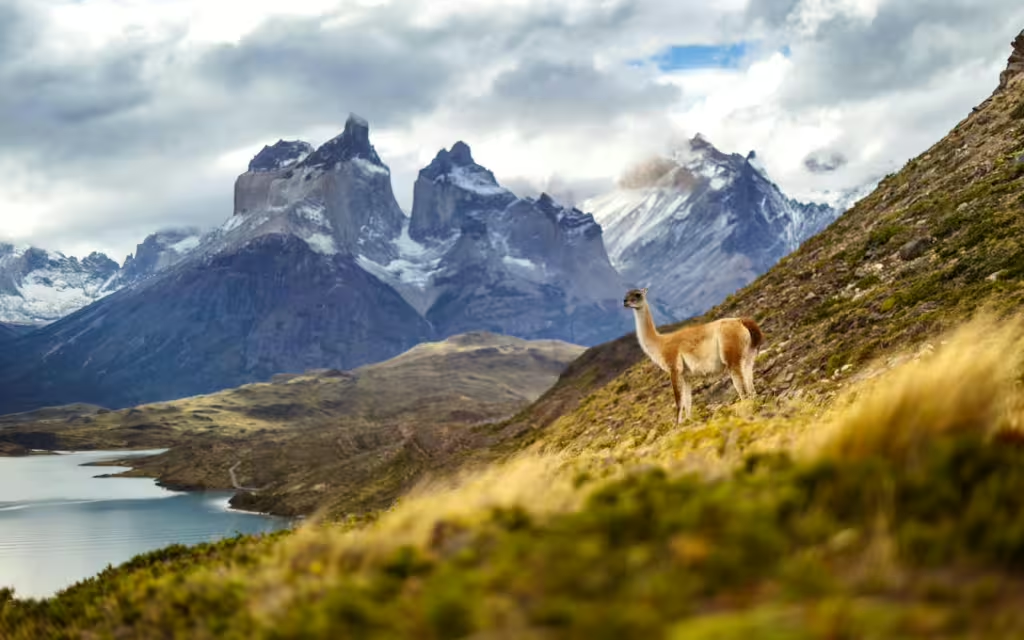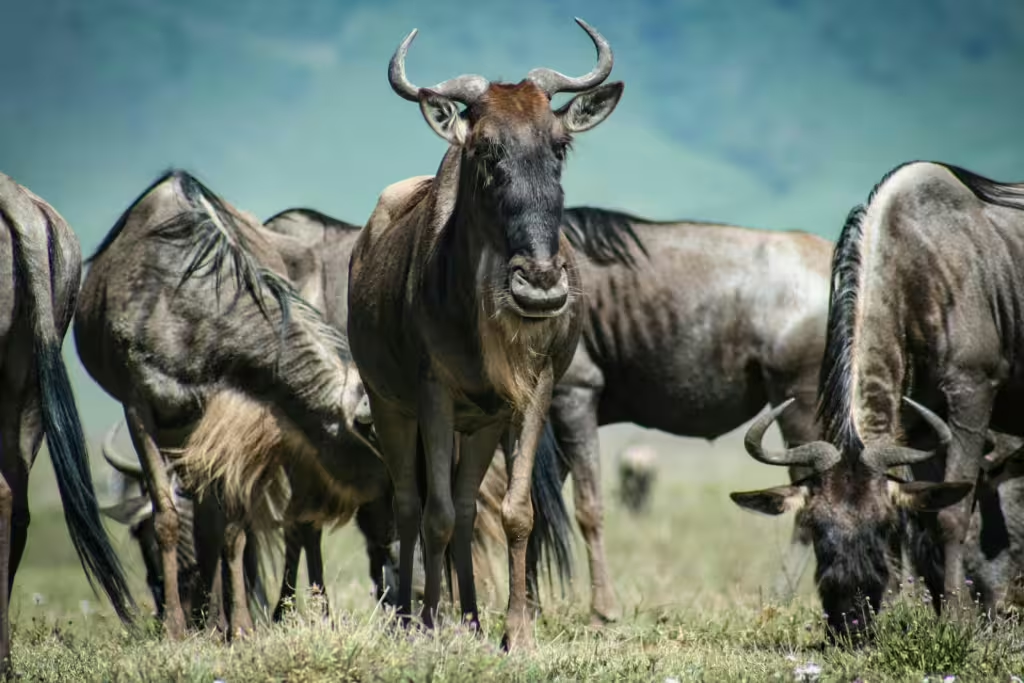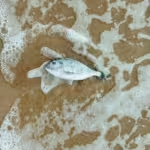Thanks to the cinematic masterpiece, The Lion King, most people think twice about the supposed placidity of herd animals. Wildebeests might look like calm, grazing animals, but when provoked, a herd of them can be powerful enough to create long-lasting childhood trauma in millions of children. When most people think of herd animals, species like wildebeest or even American bison are probably the first examples that pop into peoples’ minds. The thing is, the world is full of lesser-known herd animals that play essential roles in maintaining their ecosystems.
What most people don’t realize is that these herd animals, all of which are herbivorous in some way, are environmental engineers in their own right. These creatures shape landscapes, fertilize soil, support predator populations, and even influence water cycles. In this article, we will explore each of these amazing roles that herbivores play, whilst highlighting a few of the most unique herd animals from around the globe. By the end, our hope is that you will expand your knowledge of our planet’s amazing herd animals and perhaps heal from the lingering memories of Mufasa’s demise.
Saiga Antelope (Saiga tatarica)
The Saiga Antelope is a most peculiar-looking mammal. These animals are instantly recognizable by their oversized, downward-facing nose. Those unique and specialized noses help the Saiga to filter out dust during summer migrations, as well as warming the frigid air they breathe in the winter. This is helpful, because Saiga antelope are native to the steppes of Central Asia, where they form large migratory herds that graze extensively on grasses and shrubs.
Those same heavy grazing patterns maintain open grasslands, preventing woody plants from taking over. This, in turn, preserves that grassland habitat for many other species, including ground-dwelling birds and small mammals. At the same time, the constant movement of the herd helps cycle nutrients across vast distances, enriching soils that would otherwise become depleted over time. Saigas themselves also serve as food source for taiga predators like wolves or Siberian tigers. Sadly, disease outbreaks and poaching for their horns, which are often used in traditional medicines, have devastated Saiga populations for years. Nevertheless, conservationists are working hard to protect these amazing animals, knowing that saving the Saiga is key to preserving entire grassland ecosystems.
Chousingha (Tetracerus quadricornis)
Few readers are probably familiar with the Four-Horned Antelope otherwise known as the Chousingha. This makes sense, of course, because the Chousingha is a rather shy animal and rarely seen, even in its native homelands of India and Nepal. This unique antelope dwells in forests and open woodlands, where it grazes mostly on its own. Chousingha, you see, live a rather solitary existence, only traveling in small, loose herds when they need to breed, seek out water sources, or look after their young. The Chousingha’s grazing behavior is essential for maintaining the health of dry deciduous forests, because it helps to reign in the undergrowth and promotes a more diverse array of plant life.
Chousingha’s feed selectively, which then influences which plants thrive best. And thus, the ecosystem of the India./Nepal region is kept in balance. Additionally, the scat of the Chousingha antelope also fertilizes the soil, supporting plant regeneration. Meanwhile, predators such as leopards and dhole (wild dogs) depend on these creatures as one of their primary food sources. In many ways, the mere existence of these little-known animals is a testament to the subtle ways smaller herbivores maintain the equilibrium of complex ecosystems. As with many specialized critters, however, habitat fragmentation and hunting pressure continue to threaten their continued survival.
Guanaco (Lama guanicoe)

The Guanaco is a wild camelid, closely-related to the llama, which roams the arid plains and mountainous regions of South America. Guanacos can be found in the deserts of Patagonia all the way to the foothills of the Andes Mountains. Like most ungulates, Guanacos are herd animals that live and travel in either small family groups or larger herds. As creatures of several different biomes, the Guanaco is as well adapted to living in harsh, dry climates and mountainous areas. They graze on hardy grasses and shrubs and this feeding behavior helps to slow the spread of those plants.
Like most of the animals on this list, Guanacos help to maintain the balance needed for biodiversity within their South American home, but they also serve an additional function. You see, Guanacos are also vital in preventing desertification because their padded feet cause less soil erosion compared to other hoofed animals. Also like other ungulates, their dung contribute nutrients to the poor soil of the arid land that they call home. Guanacos are also fairly tasty…at least if you are an Andes predator, and serve as a food source for pumas and condors. Finally, Indigenous peoples have historically depended on Guanacos for wool, meat, and hides, and indeed, these animals still hold a great deal of cultural significance, even in the modern day. At present, efforts to protect wild Guanaco populations have become a crucial part of safeguarding the Patagonian steppe ecosystems in which they live.
Blue Sheep (Pseudois nayaur)
The Blue Sheep, otherwise known as the Bharal, is another mountain-dwelling animal. This creature inhabits the steep cliffs and rocky slopes of the Himalayan mountains, where their distinctive, bluish-gray coat blends perfectly with the rocky terrain. This adaptation provides the Blue Sheep with effective camouflage against predators like snow leopards. Blue Sheep are herd animals and can form groups ranging from a few individuals to over a hundred, especially in winter when food is scarce.
Blue Sheep graze in alpine meadows, which prevents them from becoming overrun with woody shrubs. This allows many medicinal plants and ground-nesting birds to survive and thrive in these areas, and the overgrowth of those shrubs would prove devastating to the delicate balance of that alpine environment. Their hard hooves also help to aerate the soil with their movements, which stimulates plant growth in otherwise barren areas of the mountains. Scientists believe that the Blue Sheep’s’ well-being reflects the health of the mountain ecosystems, which means keeping an eye on their population can be used to help determine if the environment is stable or in peril.
Nilgai (Boselaphus tragocamelus)
The Nilgai, which means “blue cow” in Hindi, is the largest Asian antelope. That size, combined with its appetite, and status as a prey animal to some of India’s largest apex predators, means that it is an integral part of India’s various ecosystems. Adult male Nilgai have a bluish-gray coat, which is where they get their name, but the females are more tawny brown. This is an example of sexual dimorphism, in which the male and female of the species have different appearances.
Nilgai antelope form loose herds and are highly adaptable, thriving in grasslands, scrub forests, and agricultural lands with equal tenacity. In each of these habitats, they help maintain open ecosystems by grazing on their favorite foods: tough grasses and shrubs. This is also a way of preventing the spread of invasive plants. Their movement patterns encourage seed dispersal, which aids in the spread of native vegetation. As prey species for tigers and leopards, Nilgai contribute to sustaining the already dwindling numbers of these populations. While they sometimes cause conflict with farmers by feeding on crops, their ecological role in promoting plant diversity and preventing ecosystem degradation is invaluable to the Indian region.
Markhor (Capra falconeri)
The Markhor is easily-recognized by its striking, corkscrew-shaped horns. This ungulate is a spectacular sight in the rugged mountains of Central Asia. Markhor herds graze and browse on tough, scrubby vegetation, helping to manage overgrowth of plant communities on the steep, rocky slopes of their mountainous home. By reducing the density of shrubs, these animals create more open habitats that benefit other species like small birds and herbivorous insects.
As with most of the creatures on the list, Markhor waste acts as a natural fertilizer, enriching the thin soils of mountainous areas. They are also a vital prey species for snow leopards and wolves that share the biome with them. Conservation efforts have seen some success in stabilizing Markhor populations, partly because of community-based programs that involve local people in sustainable wildlife management.
Bontebok (Damaliscus pygargus pygargus)
The Bontebok is a strikingly beautiful antelope with a distinctive white blaze on its face. This antelope is native to the grasslands of South Africa and like the Arabian Oryx below, was hunted almost to extinction at one point. Fortunately for the Bontebok, careful conservation efforts have allowed them to be brought back from the brink. These specialized animals graze selectively on grasses, which influences the types of grasses that dominate the landscape. This, in essence, encourages the coexistence of multiple plant species. This form of selective grazing is not uncommon among these unique antelopes and it has long-lasting effects that support a wide array of insects, birds, and small mammals that depend on diverse grassland habitats.
Bontebok waste further fertilizes the soil, promoting nutrient cycling and helping to spread seeds. By moving in small herds, Bonteboks are able to sort of self-regulate their own voracious appetites. preventing overgrazing and allowing the shorn grasses time to recover. As a result of all this behavior, the Bontebok are a vital piece of South Africa’s biodiversity and symbolize the success of targeted conservation. That all said, ongoing habitat management is necessary to ensure that Bonteboks — and the grassland ecosystems they help maintain — continue to thrive for generations to come.

Arabian Oryx (Oryx leucoryx)
The Arabian Oryx is one of the consummate desert survivors of the natural world. These hardy antelope are well-adapted to endure some of the harshest conditions on the planet Earth. Not only do their white coats reflect the desert sun, they also possess the uncanny ability to go without water for extended periods of time. This is rather helpful as the elegant creatures typically roam in small herds across the Arabian Peninsula. Though there isn’t much to graze, their grazing nonetheless prevents any of the sparse desert vegetation from becoming too thick in any particular area. This is quite helpful, in fact, as it helps to maintain the delicate balance necessary for the survival of the desert’s other plant and animal species.
Arabian Oryx migrate often to stay cool and find food and water, and this wandering allows them to spread seeds and fertilize distant patches of arid soil with their droppings. The antelope also serve as vital prey for predators, including lions. Once declared extinct in the wild, the Arabian Oryx is something of a success story. They were successfully reintroduced through captive breeding programs and today, their populations have stabilized quite well. In many ways, their story stands as one of the greatest successes in wildlife conservation and it underscores the importance of protecting even the most inhospitable ecosystems.
True Investigator Says…
As you can see, though these animals differ in size, shape, and behavior, they are all a critical part of their respective ecosystems. As with all herd animals, these species exist to help maintain the balance in their environments. Herding behaviors allows them to cover large areas, shape vegetation, and distribute nutrients. Along the way, their leavings and their fallen bodies help to maintain soil health and scatter seeds. They also serves as prey animals for local predators, which contributes to the ecological balance. The loss of any one of these animals would trigger cascading effects across entire ecosystems, and many of those that already abut human settlements worldwide.
From the rocky slopes of the Himalayas to the sweltering deserts of the Middle East, these little-known giants are nature’s way of sustaining the land and the intricate webs of life and cycles of predation that depend on it to function. Still, as human development continues to shrink wild spaces on every continent, protecting these extraordinary herd animals continues to become more important than ever. We must woke hard to ensure that these incredible animals survive because if we do not, entire ecosystems will cease to function, and the negative effects will cascade into our own lives with alarming speed.
Discover more from TrueInvestigator
Subscribe to get the latest posts sent to your email.


